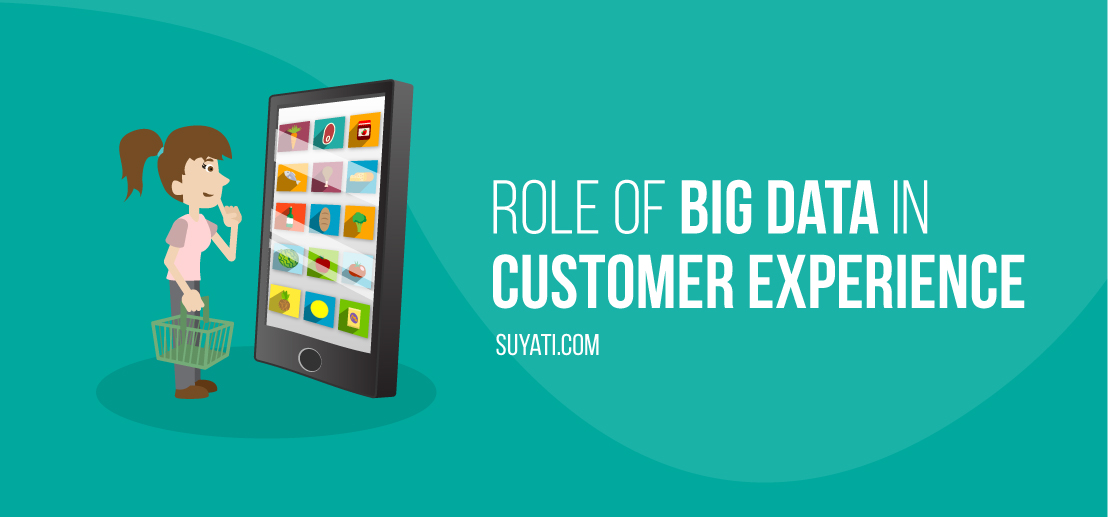
A savvy customer today, expects multi-channel engagement, prompt and personalized service, and value for their money. How can businesses rise to meet these expectations, within their allocated budget? The answer lies in adequately leveraging big data to gain useful insights about their customers, and use these insights to refine the customer experience and delight customers to encourage them to be loyal customers of the company.
According to a combined study conducted by international certification body – DNV GL (Business Assurance) and research firm GFK Eurisko, big data as a business strategy ranks high on company agendas with 65% companies planning to use big data in a significant way. 15.6% companies have reported improved customer experience and engagement as a result of big data insight.
Why is big data important in delivering the ultimate customer experience?
Each time a customer searches the web for a product, reads a review, makes a purchase, interacts with customer service personnel, or comments about a product in social media, valuable data regarding customers and the products are generated, which can be used effectively to engage customers better and render a satisfying retail experience.
Here is how big data can help companies to improve the customer experience and build a loyal customer base:
1. Big data supports research and development of new products
By actively listening to direct and indirect customer feedback, companies can identify the shortcomings in their products and use these information to improve. Data collected from social media and customer forums helps companies to sense the mood and desires of customers. Such information can be used to develop new products or add features to existing products. Big data can guide product development and pave the way to a slew of products that garner instant customer favor.
2. Big data helps companies to meet customer expectations
Collecting and analyzing big data insights gives a clear picture of how customers perceive their brand and what are their expectations. They get an idea about their customer’s concerns, address commonly asked questions regarding their products, resolve issues pertaining to their purchase and fulfillment processes. Big data can help businesses to meet customer expectations at every stage in your step customer lifecycle.
3. Big data tells you where and how to reach your customer
Today, with the advent of social media, customer service has become omni-channel. A customer may choose to interact with a company via phone, email, website, or a social media network. While it is certainly beneficial to employ multiple communication channels, it pays to know who your main customers are and what their preferred communication channels. Having access to this information can help companies to fine-tune their marketing messages and convey relevant content about their products.
4. Big data helps deliver a personalized shopping experience
Customer profiling, past purchase history, recent contact history, and predictive analytics modeling, can help you identify customer interests so that companies can approach their customers at a time when they are likely to be most receptive to marketing messages. Big data gives a scientific way of anticipating customer interests and predicting customer behavior. Companies can now deliver targeted marketing messages and promotional offers, through emails and smartphones and achieve higher than before conversion rates. Big data can also be used to support location-based advertising by sending deals and discounts on specific products that the company knows customers are currently interested in.
5. Big data helps improve customer service
Big data insight can help companies to really turnaround their customer service. 59% of customers in the 25-34 age group share poor customer experiences online. Companies can use this information to detect flaws in their customer service process and improve it to deliver a fulfilling experience to their customers, irrespective of the channel they choose to interact with the company. Big data analytics can lead to timely communication that accurately address customer questions and concerns, resulting in improved customer satisfaction.
The Macy’s success story
Macy’s is a perfect example of an age-old department store that has adopted big data analytics successfully in the recent past. Macy’s put strong focus on delivering localized and personalized retail experience to its customers. Each of their stores is organized to cater to local customer expectations based on learning derived from key factors like out-of-stock rates, sell through rates, effect of discounts and promotions on regional sales, etc. It also analyzes customer data like current location, preferences, visit frequency, search keywords, to personalize the shopping experience and to offer customized incentives. Detailed profiles based on a 360º view of their online customers were created to generate targeted promotional offers and give their customers an integrated multi-channel experience. As a result, they have seen higher online conversions and impressive retention rates.
By leveraging big data, Macy’s has achieved a 10% increase in store sales. Does your company have a similar big data success story? Do write to us.
About the Author

S. Karthikeyan, or SK as he is better known, has 19 years of experience in designing, leading and delivering world-class software solutions. His specialties include Product Ideation, Innovation & Strategy, Enterprise & Solution Consulting, Data Science Solutions, and Digital Transformation. As Chief Innovation Officer, SK ensures that experimentation and innovation continues unfettered at Suyati Technologies. He leads the Mekanate team that is developing a Digital Transformation platform using AI, ML, IoT and Big Data technologies. He holds a Masters Degree in Computer Application, and Advanced Certificate in Information Technology Management from IIM, Kozhikode. The opportunity to build technically complex solutions is what runs through his mind all day, and probably keeps him awake at night! Connect with him on LinkedIn.
